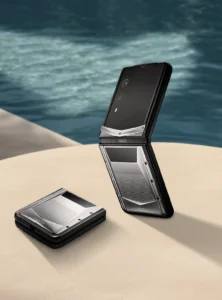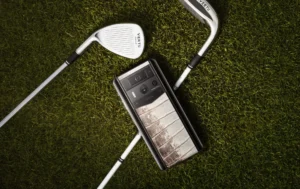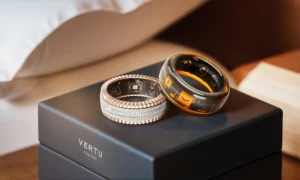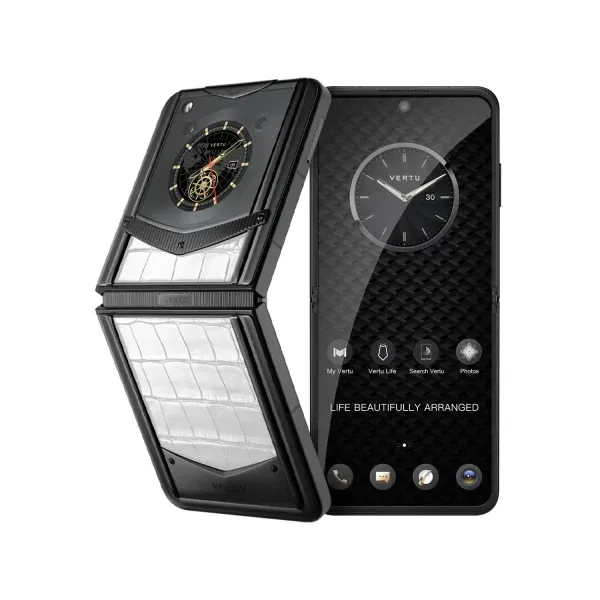
Flip phones transformed how you connect with others, making mobile communication more accessible and stylish. Their compact design and unique flip mechanism introduced a new way to carry and use phones. You might wonder, when were flip phones invented? The answer lies in the 1990s, a time when innovation in mobile communication was booming. This revolution of flip phones didn’t just change technology; it redefined convenience and portability. Even today, the flip phone remains a symbol of elegance and functionality.
Key Takeaways
Flip phones improved mobile use with small and cool designs.
The Motorola StarTAC, released in 1996, was the first flip phone.
New flip phones mix old-school style with modern technology.
Flip phones were trendy and showed class in the early 2000s.
Their comeback shows people want simple phones in a busy world.
When Were Flip Phones Invented?
The First Flip Phone
Motorola StarTAC: A Revolutionary Beginning
The Motorola StarTAC, released on January 3, 1996, marked the official emergence of the flip phone. It wasn’t just a device; it was a groundbreaking innovation that redefined mobile communication. As the first flip phone to utilize the clamshell design, the StarTAC introduced a compact form factor that made carrying a phone more convenient than ever. Its lightweight build and sleek appearance appealed to consumers who valued portability and style.
Before the StarTAC, Motorola had already laid the foundation for flip phones with the MicroTAC in 1989. This earlier model targeted affluent users with its $3,000 price tag and introduced the flip mechanism that would later become iconic. The MicroTAC’s ability to fold open and close not only protected its keypad and screen but also added a layer of sophistication to mobile design.
The StarTAC revolutionized the industry by incorporating a lithium-ion battery, which was lighter and more efficient than previous options. This advancement showcased Motorola’s commitment to pushing technological boundaries while maintaining user-friendly features.
The Role of Martin Cooper and Motorola in Mobile Innovation
Martin Cooper, often referred to as the “father of the mobile phone,” played a pivotal role in Motorola’s journey toward creating the first flip phone. His vision for portable communication inspired the company to innovate beyond bulky devices. Motorola’s engineers embraced this challenge, leading to the rise of the flip phone as a symbol of technological progress.
The StarTAC’s success wasn’t just about its design; it was about its functionality. By combining portability with cutting-edge features, Motorola set a new standard for mobile phones. This achievement paved the way for future advancements, including clamshell flip phones with color screens and cameras.
Early Features of the Flip Phone
Compact Design and Portability
The flip phone’s compact design transformed how you carried and used mobile devices. Unlike earlier models, which were large and cumbersome, flip phones fit easily into pockets and bags. The Motorola MicroTAC pioneered this shift in 1989, offering a smaller and more portable alternative to traditional phones.
The clamshell design protected the screen and keypad, reducing the risk of accidental damage.
The flip mechanism doubled as an on/off switch, simplifying call management.
These features made flip phones practical for everyday use, ensuring their popularity among consumers seeking convenience.
The Flip Mechanism: A Functional and Stylish Innovation
The flip mechanism wasn’t just functional; it was stylish. Opening and closing a flip phone became a satisfying ritual, adding a touch of elegance to mobile communication. This design innovation allowed users to answer or end calls with a simple flip, enhancing the overall experience.
The clamshell design also contributed to the rise of the flip phone as a status symbol. Its sleek appearance and intuitive functionality appealed to users who valued both form and function.
Motorola’s early flip phones set the stage for future models, proving that technology could be both practical and visually appealing.
The History of the Flip Phone
Key Milestones in the Evolution of Flip Phones
Introduction of Color Screens and Cameras
The introduction of color screens and cameras marked a turning point in the history of phones. Early flip phones featured monochrome displays, but by the early 2000s, manufacturers began incorporating vibrant color screens. This innovation enhanced the user experience, making it easier to view photos, videos, and messages. Cameras soon followed, transforming flip phones into multimedia devices. Models like the Sony Ericsson W380a and Motorola Razr V3 led this shift, offering built-in cameras that allowed users to capture moments on the go.
These advancements not only improved functionality but also made flip phones more appealing to a broader audience.
The Rise of Clamshell Designs in the Early 2000s
The early 2000s saw the rise of clamshell style mobile phones, which became synonymous with elegance and practicality. Their compact design and protective flip mechanism appealed to users who valued both style and durability. The Motorola Razr V3, released in 2004, epitomized this trend. Its slim profile and metallic finish set a new standard for mobile design, making it one of the most popular flip phone models of its time.
Year | Model | Key Features and Market Impact |
|---|---|---|
1996 | Motorola StarTAC | First flip phone, sold 60 million units, introduced lithium-ion battery. |
2004 | Motorola Razr V3 | Slim design, positioned as a premium phone, most popular in the U.S. from 2004-2008. |
2007 | Sony Ericsson W380a | Stylish phone from the Walkman series, notable competitor in the early 2000s. |
2020 | Modern comeback of flip design, features a foldable screen with hybrid glass technology. |
Iconic Flip Phone Models
Motorola Razr: The Ultimate Status Symbol
The Motorola Razr V3 became a cultural icon and redefined the evolution of flip phones. Its ultra-slim design and premium materials made it a must-have device for style-conscious users. From 2004 to 2008, it dominated the market, selling over 130 million units worldwide. The Razr V3 wasn’t just a phone; it was a statement of sophistication and innovation.
Samsung and LG's Contributions to Flip Phone Design
Samsung and LG played pivotal roles in shaping the history of the flip phone. Samsung introduced models like the SPH-M100, which featured a built-in MP3 player, while LG focused on integrating multimedia capabilities. These brands expanded the variety of clamshell style mobile phones, ensuring that consumers had options that combined functionality with cutting-edge design.
Technological Advancements in Flip Phones
Multimedia Features and 3G Connectivity
The early 2000s brought significant advancements in flip phone technology. Manufacturers began adding features like MP3 players, video playback, and 3G connectivity. These innovations allowed you to enjoy music, videos, and faster internet browsing on your device. The Motorola Razr V3 and Sony Ericsson W508 exemplified this trend, offering enhanced multimedia capabilities that set them apart from earlier models.
The Transition to Foldable and Hybrid Designs
The resurgence of flip phones in the 2020s introduced foldable technology, blending the nostalgia of clamshell designs with modern smartphone features. Devices like the Samsung Galaxy Z Flip showcased foldable screens made from hybrid glass, offering a seamless transition between compactness and functionality. This innovation bridged the gap between traditional flip phones and contemporary smartphones, redefining the history of phones.

The evolution of flip phones demonstrates how technology and design can adapt to meet changing consumer needs. From the Motorola StarTAC to modern foldable devices, the history of the flip phone reflects a journey of innovation and reinvention.
The Cultural Impact of Flip Phones
Flip Phones in Pop Culture
Their Role in Movies, TV Shows, and Music Videos
Flip phones became a cultural phenomenon, appearing in countless movies, TV shows, and music videos. You might recall iconic scenes where characters flipped open their phones to answer a call dramatically. This simple action added flair and excitement to storytelling. Films like The Matrix showcased the clamshell design as futuristic and cutting-edge. TV shows like Gossip Girl used flip phones to highlight the luxurious lifestyles of their characters.
Music videos also embraced the flip phone. Artists often used them as props to emphasize their style and status. These appearances cemented the flip phone as more than a communication device. It became a symbol of modernity and sophistication.
The Association with Style and Status
Owning a flip phone once signified elegance and exclusivity. Its revolutionary design, combining functionality with sleek aesthetics, appealed to those who valued both form and utility. Celebrities and business professionals often carried clamshell phones, reinforcing their association with success. The Motorola Razr, for instance, became a status symbol due to its slim profile and premium materials.
Even today, the nostalgia for flip phones reflects their lasting impact on style and culture. Their unique design continues to inspire modern devices, blending retro charm with advanced technology.
Influence on Consumer Behavior
The Shift Toward Personalized and Fashionable Devices
Flip phones played a pivotal role in shifting consumer preferences toward personalized and fashionable technology. Their clamshell design allowed manufacturers to experiment with colors, materials, and finishes. This customization made phones feel like personal accessories rather than just tools.
The resurgence of flip phones highlights a growing desire for simpler technology in a hyper-connected world. Many consumers, especially younger generations, appreciate the nostalgia and practicality of these devices. Women, in particular, have shown interest in flip phones as they navigate digital futures for their families.
The Role of Flip Phones in the Mobile Phone Boom
The popularity of flip phones contributed significantly to the mobile phone boom. Their compact size and revolutionary design made them accessible to a wide audience. The clamshell mechanism protected screens and keypads, enhancing durability and functionality. These features boosted their appeal, driving widespread adoption.
Flip phones bridged the gap between basic phones and smartphones. They introduced features like cameras and color screens, paving the way for modern mobile technology. Their influence on consumer behavior remains evident, as they continue to inspire innovation in the industry.
The Decline and Resurgence of Flip Phones
The Decline of Flip Phones
The Rise of Smartphones and Touchscreens
The fall of the flip phone began with the rise of smartphones in the late 2000s. Touchscreen technology revolutionized how you interacted with mobile devices. Phones like the iPhone introduced larger screens, advanced apps, and internet browsing capabilities. These features shifted consumer preferences, making flip phones seem outdated.
Market analysis highlights this shift. Flip phones, once celebrated for their compact design, lost their appeal as users demanded more functionality. Touchscreens offered seamless navigation and multitasking, which flip phones struggled to match. This technological leap marked a turning point in mobile communication history.
The Limitations of Early Flip Phone Technology
Early flip phones had their limitations. Their small screens and basic features couldn’t compete with the versatility of smartphones. While they excelled in portability, they lacked the processing power and storage capacity needed for modern apps and multimedia.
Battery life also became a concern. As users began to rely on their phones for more than just calls and texts, the simple designs of flip phones couldn’t keep up. These limitations contributed to their decline, paving the way for smartphones to dominate the market.
The Resurgence of Flip Phones
Nostalgia and the Appeal of Simplicity
The return of the flip phone reflects a growing desire for simplicity in a complex digital world. Many people, especially parents, appreciate the straightforward functionality of these devices. Flip phones offer a break from constant notifications and social media distractions.
Discussions about flip phones have increased by 40% since the pandemic.
Mothers, in particular, favor these devices for their children, valuing their limited digital engagement.
This trend highlights a preference for simpler, more focused technology.
Nostalgia also plays a key role. For many, flip phones evoke memories of a time when technology felt more personal and less overwhelming. Their iconic design and tactile flip mechanism continue to charm users, making them a timeless choice.
Modern Innovations: The VERTU® IRONFLIP ALLIGATOR SKIN SERIES-ELEPHANT GREY
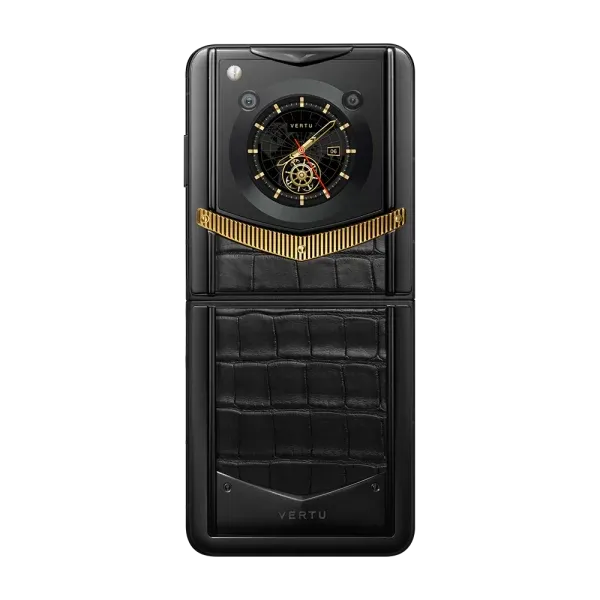
The resurgence of flip phones isn’t just about nostalgia. Modern innovations have redefined what a flip phone can be. The VERTU® IRONFLIP ALLIGATOR SKIN SERIES-ELEPHANT GREY exemplifies this evolution.
This luxury device combines elegance with cutting-edge technology. Its 6.9-inch flexible OLED screen offers vibrant visuals, while the watch-like outer display adds a unique touch. The alligator skin exterior and sapphire casing ensure durability and sophistication. With features like a 50MP camera, AI capabilities, and ultra-fast charging, this phone bridges the gap between classic design and modern functionality.
The resurgence of flip phones proves their enduring appeal. Whether driven by nostalgia or innovation, these devices continue to capture the imagination of users worldwide.
The Legacy of Flip Phones
Their Significance in Mobile Technology History
Bridging the Gap Between Basic Phones and Smartphones
Flip phones played a crucial role in bridging the gap between basic phones and smartphones. They introduced features like color screens, cameras, and multimedia capabilities, which were groundbreaking at the time. These advancements made mobile phones more than just tools for communication. They became devices for entertainment and self-expression.
The timeline of flip phones highlights their impact on mobile technology history:
In 1996, Motorola's StarTAC became the first flip phone, revolutionizing portability.
By 2000, Samsung's SPH-M100 added a built-in MP3 player, merging communication with music.
Between 2004 and 2009, models like the Motorola Razr V3 and Sony Ericsson W508 showcased advanced design features and functionality.
The rise of touchscreen smartphones, starting with the iPhone in 2007, marked a shift in consumer preferences.
In 2019, flip phones made a comeback with modern designs, blending nostalgia with innovation.
This evolution demonstrates how flip phones paved the way for smartphones by introducing features that enhanced user experience.
A Design That Continues to Inspire Innovation
The importance of flip phone design lies in its ability to combine style with practicality. The clamshell mechanism protected screens and keypads, ensuring durability. It also added a tactile element that made using the phone enjoyable.
Modern devices, like the Samsung Galaxy Z Flip and Motorola Razr Plus, draw inspiration from classic flip phones. These models incorporate foldable screens and advanced technology while retaining the iconic flip mechanism. This enduring influence highlights the flip phone legacy as a source of inspiration for contemporary mobile designs.
Lessons from the Flip Phone Era
The Importance of User-Friendly Design
Flip phones taught the industry the value of user-friendly design. Their compact size and intuitive flip mechanism made them easy to use. You could answer or end calls with a simple flip, which added convenience to everyday tasks.
Manufacturers learned that simplicity often appeals more to users than overly complex features. This lesson continues to shape modern devices, where ease of use remains a priority.
The Enduring Appeal of Functional Simplicity
The flip phone era emphasized the enduring appeal of functional simplicity. These devices focused on essential features, such as calling and texting, without overwhelming users with unnecessary options.
Today, many people seek simpler technology to escape the distractions of modern smartphones. Flip phones, with their minimalist design, offer a refreshing alternative. Their legacy reminds us that sometimes, less is more when it comes to technology.
Flip phones have shaped mobile technology in ways that continue to influence modern devices. From the groundbreaking Motorola StarTAC to the luxurious VERTU® IRONFLIP ALLIGATOR SKIN SERIES-ELEPHANT GREY, these devices showcase the perfect blend of innovation and style.
Key Takeaways:
Flip phones revolutionized portability and design.
Their resurgence highlights a timeless appeal for simplicity and elegance.
Flip phones remain more than just gadgets. They symbolize a transformative era in communication, inspiring both nostalgia and future innovation.
FAQ
What made flip phones so popular in the early 2000s?
Flip phones gained popularity due to their compact design, stylish flip mechanism, and added features like cameras and color screens. They offered portability and durability, making them practical for everyday use. Their sleek appearance also turned them into status symbols for many users.
Why did flip phones decline in popularity?
The rise of smartphones with touchscreens and advanced features caused the decline of flip phones. Smartphones offered larger displays, better apps, and internet browsing, which flip phones couldn’t match. This shift in consumer preferences marked the end of the flip phone’s dominance.
How are modern flip phones different from older models?
Modern flip phones, like the VERTU® IRONFLIP, combine classic designs with advanced technology. They feature foldable OLED screens, powerful cameras, and fast charging. These devices blend nostalgia with innovation, offering both style and functionality for today’s users.
Are flip phones still relevant today?
Yes, flip phones remain relevant. Many people prefer them for their simplicity and durability. Modern versions cater to luxury and tech-savvy users, while basic models appeal to those seeking distraction-free communication. Their resurgence reflects a growing appreciation for minimalist technology.
What is the cultural significance of flip phones?
Flip phones symbolize a transformative era in mobile communication. They appeared in movies, TV shows, and music videos, becoming icons of style and innovation. Their unique design and cultural impact continue to inspire modern devices, blending nostalgia with cutting-edge technology.

